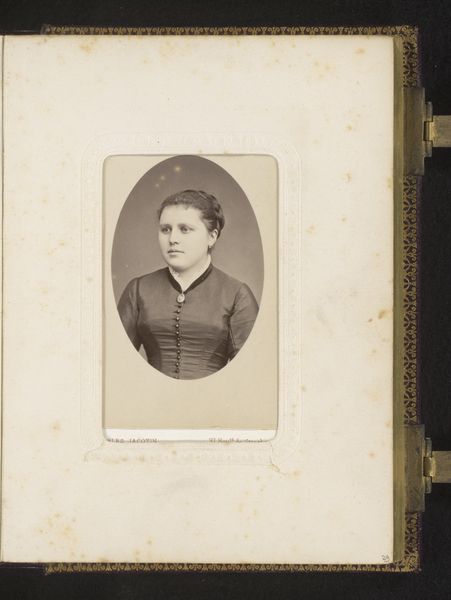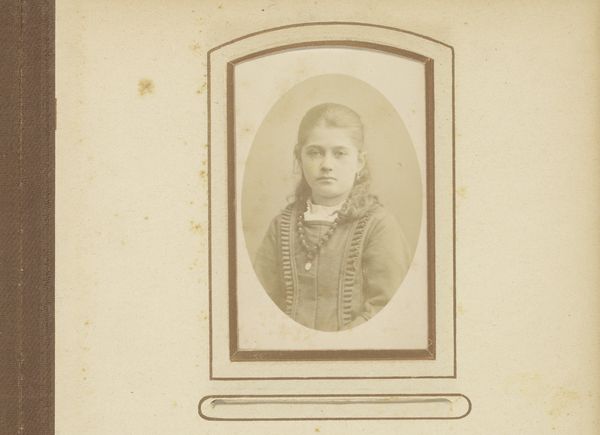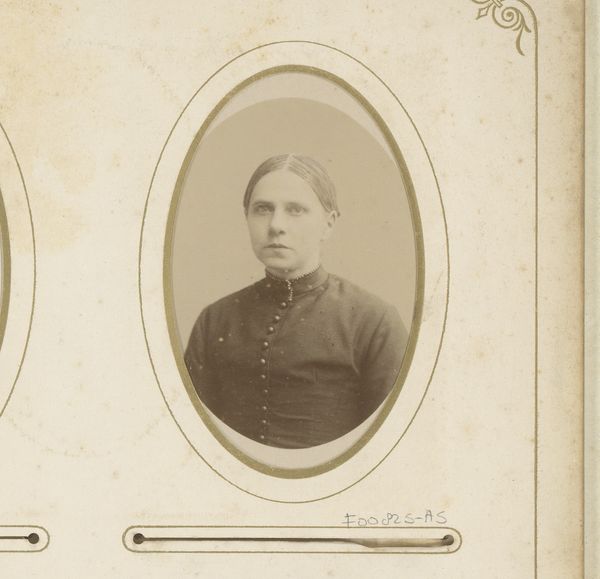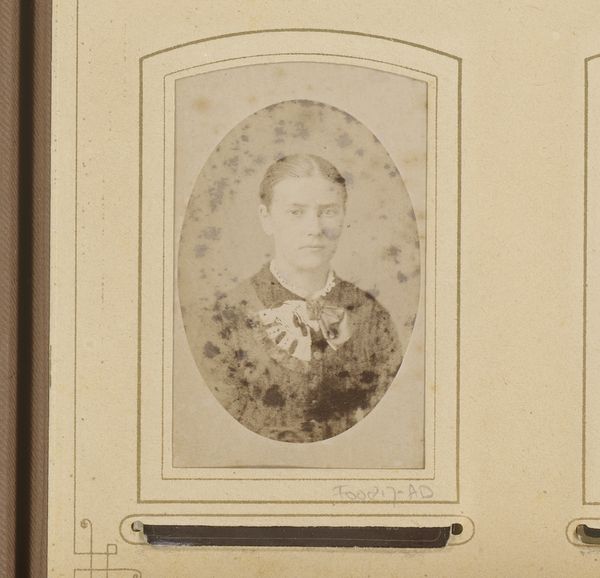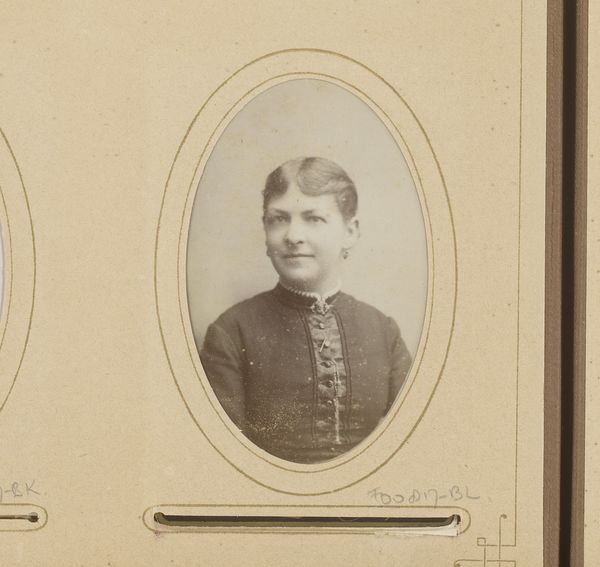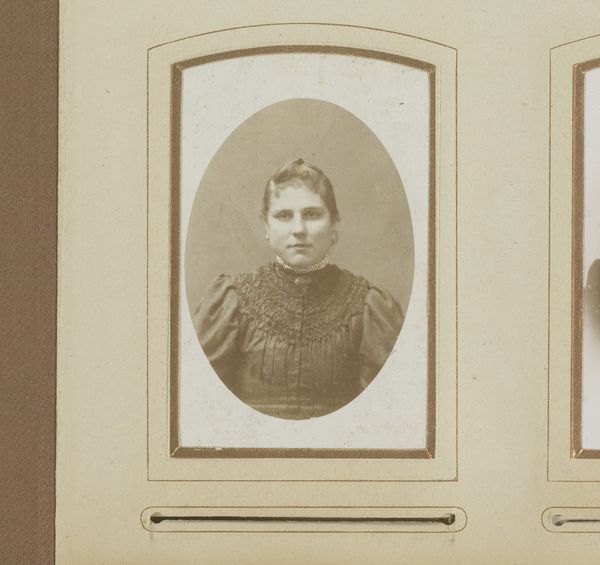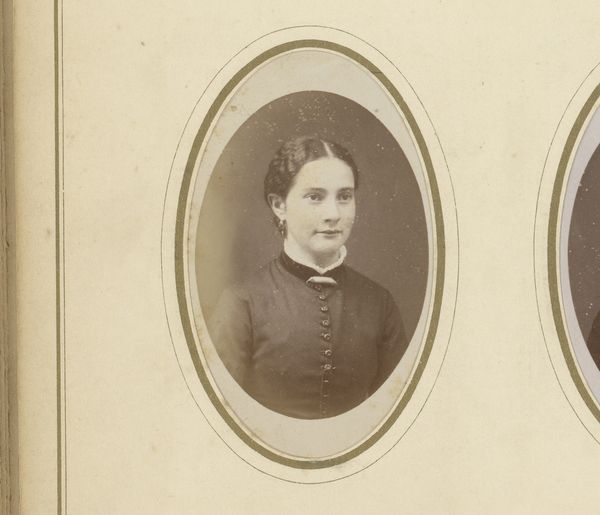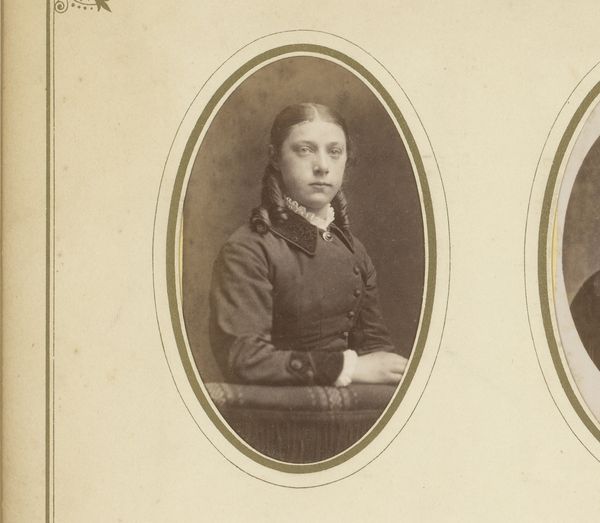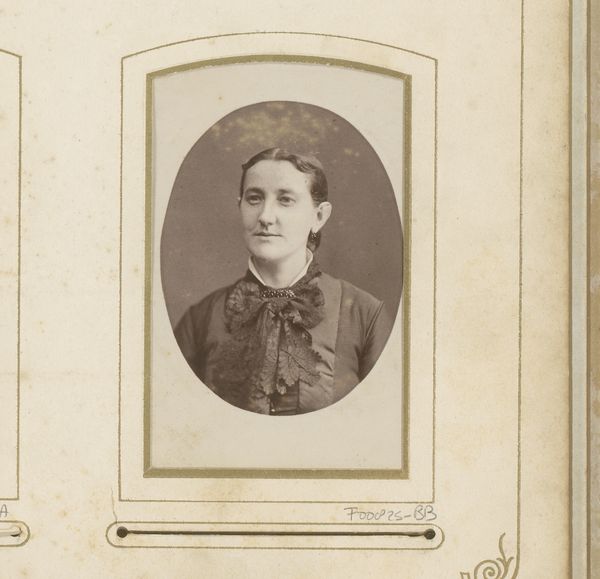
photography
#
portrait
#
photography
#
historical photography
#
19th century
#
realism
Dimensions: height 84 mm, width 50 mm
Copyright: Rijks Museum: Open Domain
Curator: Here we have a striking portrait photograph from somewhere between 1850 and 1900, titled "Portret van een vrouw," credited to Émile Lecoq. Editor: It's so somber, isn’t it? The limited tonal range gives the image a flattened effect, and yet that oval frame within the rectangular mount creates an almost halo-like effect. It's compelling. Curator: Indeed. Contextually, early photography, particularly portraiture, was becoming increasingly accessible, offering a relatively affordable way for individuals to document their likeness. This portrait embodies realism; the subject isn't idealized, allowing her individuality to shine through. It speaks volumes about the shifting societal power structures related to who got to be seen, and how. Editor: I’m drawn to the compositional choices – the cropped bust, the direct gaze. There's a very formal construction but look closer, and the materiality softens those structural forms. See how the grain and slightly uneven development provide an element of vulnerability. The dots that form buttons against the black fabric anchor your eyes and also emphasize the textural variance. Curator: It makes me think about the performance of identity here. This is her self, consciously presented through attire, pose and gaze – and her agency in the documentation and dissemination of this carefully crafted presentation of self. Did she control this image? Editor: Interesting question, but perhaps ultimately unanswerable given what we know here today. Regardless, there's an interplay between control and chance. Consider the chemical processes involved, the variations in light. These factors inevitably imprinted upon the final image and remind us that while this might seem straightforward realism, a myriad number of material interventions mediate how we see it today. Curator: Yes, and that dance between individual intention and social conditions is at the very heart of understanding portraits such as this one. The image is evidence of not only an individual life but the society and times she existed within. Editor: Indeed. The nuances of visual structure and material presentation give life to those individual and social stories.
Comments
No comments
Be the first to comment and join the conversation on the ultimate creative platform.
